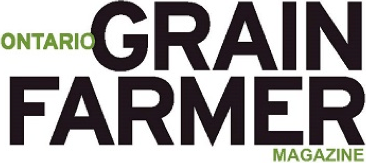Advancing wheat in Ontario through variety and site specific management
Principal Investigator
David Hooker
Research Institution
University of Guelph
External Funding Partners
C&M Seeds; Ontario Ministry of Agriculture, Food and Rural Affairs (OMAFRA); University of Guelph, Ridgetown Campus
This project was funded in part through the Ontario Farm Innovation Program (OFIP). OFIP is funded through Growing Forward 2 (GF2), a federal-provincial-territorial initiative. The Agricultural Adaptation Council assists in the delivery of Growing Forward 2 in Ontario.
Project Start
October 2013
Project End
December 2015
Objectives
- Identify site-specific opportunities for intensive management with a focus on both soft and hard red wheat in Ontario.
- Characterize the response of various intensive management strategies on soft red and hard red wheat grain yield and quality across zones of field variability.
Impact
- The development and validation of prescriptions to drive equipment with variable rate technologies using GPS may provide opportunities to manage inputs on a site-specific basis or in management zones across fields.
- The optimization of agronomic inputs through use of site-specific application of hybrids, optimal nitrogen rates, and the use of foliar fungicides has the potential to increase management opportunities and improve financial returns.
- The development of methodologies for identifying management zones in the field using advanced statistical approaches will advance precision agriculture research and lead to validated approaches for generating management zones on the farm.
Scientific Summary
The development of GPS and variable rate technologies has created an opportunity to manage inputs on a site‐specific basis or small management zones. Each of these zones may be characterized by several variables. In addition, other layers of information within the GIS will be generated by using various sensor technologies during the growing season for identify various management opportunities (e.g., such as more N or a fungicide application). All of these sources of information (layers) will be investigated, prioritized, or weighed for predicting crop responses and optimizing inputs. Previous Strategic Management Adding Revenue Today (SMART) wheat projects have raised the bar of wheat production in Ontario. All of these experiments have been conducted by ignoring spatial variability. The results from those projects exceeded expectations by advancing wheat management. Clearly, many opportunities exist for high level management of agronomic inputs by site-specific field position in Ontario, but scientific research is very scarce in the province. Many growers in Ontario are asking for scientific data to back claims of higher profitability of site-specific management.
The project aimed to determine site-specific responses of the most successful management strategies that were included in previous projects. A focus will also include grain yield and protein management in hard red wheat. Conclusions from results still need solidifying: a third year of experimentation will follow under “Advancing corn and wheat in Ontario through site-specific management: the conclusion.” We initially proposed 3 field locations per year in 2014 and 2015 for a total of 6-crop years; 4 of these fields would be planted to hard red and 2 fields with soft red wheat. In 2014, treatments were installed on the 3 fields, but one field had excessive winterkill and could not be salvaged. In 2015, experiments were conducted on an additional field to make up for the lost field in 2014. The project was extended in 2016 with 2 more field locations for soft and hard red wheat through the Growing Forward 2 program. Extensive crop sampling was conducted to determine the site-specific responsiveness of grain yield and quality to various crop management strategies. We are investigating whether site-specific crop responses can be predicted from extensive soil characterization and topographical features. The identification of these features would allow future management to adjust inputs for maximum crop response. Using new statistical analytic tools to account for spatial variability, data to date shows that grain yield and quality responses to management depends highly on spatial location in the field. These results show that production and economics can increase through better resource allocation through site-specific management. A reduction of N rates from normal practices in some areas, and increased rates in other areas, equates to improved resource efficiencies and a lower environmental impact.

